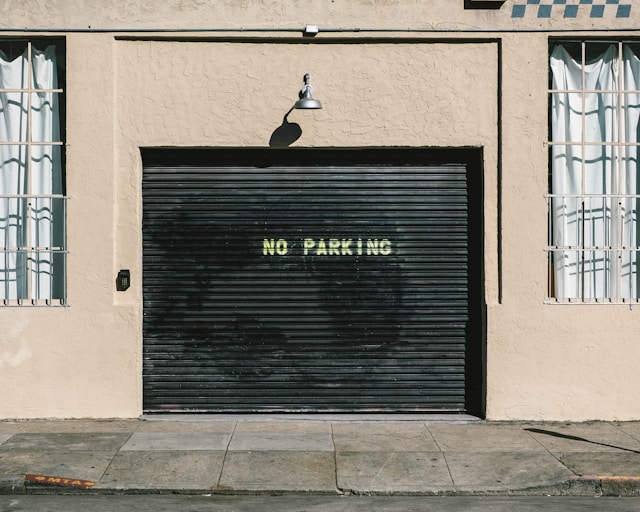A garage door is one of those household features you rarely think about—until it stops working. Whether it’s refusing to open, making unusual noises, or moving unevenly, garage door issues can range from minor annoyances to safety hazards. Understanding the most common problems can help you know when a quick fix is possible and when it’s time to call in a professional.

Why Garage Door Maintenance Matters
Your garage door is a moving system made up of multiple parts—springs, cables, rollers, tracks, and an opener motor—that all work together to lift and lower a heavy door several times a day. Over time, wear and tear are inevitable. Regular maintenance helps prevent breakdowns, extends the life of the components, and keeps the door operating safely.
Neglecting minor issues can lead to bigger, more expensive repairs down the road. More importantly, a malfunctioning garage door can be a safety risk, especially if it unexpectedly closes or a cable snaps.
Problem 1: The Door Won’t Open or Close
One of the most frustrating issues is when the door refuses to move. This can have several causes:
- Power source issues – The opener might be unplugged, or there could be a tripped circuit breaker.
- Remote control problems – Dead batteries or signal interference can stop the remote from working.
- Misaligned sensors – Modern doors use photo-eye sensors to detect obstructions; if they’re dirty or misaligned, the door may not close.
- Broken springs – Torsion or extension springs can snap, preventing the door from lifting.
While replacing batteries or cleaning sensors is simple, spring replacement is dangerous and should be left to trained professionals.
Problem 2: Noisy Operation
Garage doors aren’t silent, but loud grinding, squeaking, or banging noises often signal a problem. Common culprits include:
- Dry or worn rollers
- Loose hardware
- Unbalanced door
- Opener chain or belt issues
Lubricating metal parts with a garage door lubricant (not WD-40) can reduce noise. However, if the sounds persist, it’s worth having the door inspected to prevent more serious damage.
Problem 3: The Door Moves Unevenly or Jerks
If your garage door shakes, jerks, or moves unevenly as it opens or closes, it could be due to:
- Worn rollers or bearings
- A bent track
- A broken cable
- Spring tension issues
Continuing to use the door in this condition can make the problem worse. Stop using the opener and call for repairs before a small alignment issue becomes a major track replacement.
Problem 4: The Door Reverses Unexpectedly
Garage doors are equipped with safety features that stop or reverse the door if something is in its path. If your door reverses with no obstruction present, it may be:
- A sensitivity setting that’s too high or too low
- Misaligned safety sensors
- Debris in the track
Adjusting sensitivity or cleaning sensors can sometimes solve the problem, but if the door continues to malfunction, it’s best to have the opener inspected.
Problem 5: Slow Response Time
If you notice a delay between pressing the opener button and the door moving, you may be dealing with a worn-out motor, weak batteries in the remote, or wiring issues. Slow operation can also be a sign that the door’s weight is not properly balanced, which puts extra strain on the opener.
Problem 6: The Door Feels Heavy
When you disconnect the opener and try to lift the door manually, it should feel relatively easy thanks to the springs that counterbalance the weight. If the door feels unusually heavy, it’s often a sign that the springs are worn or broken. Attempting to operate the door in this condition can be dangerous, so stop using it and arrange for professional repair immediately.
When to Call a Professional
While homeowners can handle minor fixes like replacing remote batteries, cleaning tracks, and lubricating rollers, many garage door repairs involve high-tension springs, heavy components, and electrical systems. These can cause serious injury if handled improperly.
If you’re facing issues beyond basic upkeep, a trained technician—such as the team at NorCal Door Repair—can diagnose the problem, replace worn parts, and ensure the door operates safely.
Preventing Future Problems
Regular maintenance is the key to avoiding sudden breakdowns. Once or twice a year, take time to:
- Inspect and tighten all hardware
- Lubricate moving metal parts
- Test the door’s balance by lifting it halfway and seeing if it stays in place
- Clean photo-eye sensors and tracks
- Listen for unusual noises during operation
These small steps can help catch issues early and extend the lifespan of your garage door system.
Safety First
Garage doors are heavy and operate under high tension. Understanding the built-in safety features—and ensuring they work properly—can prevent accidents. The U.S. Consumer Product Safety Commission provides guidelines on testing auto-reverse systems, keeping remotes out of children’s reach, and avoiding common hazards.
Final Thoughts
A properly working garage door offers convenience, security, and safety for your home. By recognizing common problems and addressing them promptly, you can avoid bigger issues later. Whether it’s a simple adjustment or a more complex repair, knowing when to call a professional ensures your garage door remains reliable for years to come.